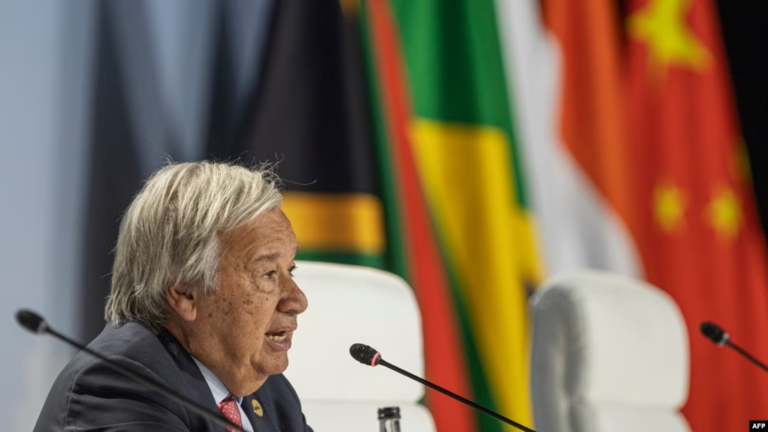Australia to get a nuclear-powered submarine fleet. Why is there the alliance with London and Washington for the Indo-Pacific? what is the schedule And: Why are the partners pushing ahead with their plans now? The overview.
The Australian Navy is to be equipped with nuclear submarines. This was announced by US President Joe Biden and the heads of government of Great Britain and Australia , Rishi Sunak and Anthony Albanese , on Monday (local time) at a meeting in San Diego. They announced the general goal 18 months ago – now they have presented the details for the major project.
What’s next for the Aukus Pact?
The USA , Great Britain and Australia created the security alliance Aukus – the name comes from the English abbreviations of the countries – in September 2021 to strengthen security and military deterrence in the Indo-Pacific. Now the three states have agreed on a concrete schedule for equipping them with a submarine fleet.

At a naval base in San Diego, California: Australian Prime Minister Anthony Albanese, US President Joe Biden and British Prime Minister Rishi Sunak Photo: ETIENNE LAURENT / EPA
- American and British submarines are to call more ports in Australia, and Australian sailors are to be integrated into submarine units.
- From 2027 onwards, the USA and Great Britain plan to station submarines in Australia on a rotating basis to train Australian seamen, engineers and technicians.
- During the 1930s, Australia plans to build its own nuclear-powered submarine fleet. To this end, the country will initially buy three »Virginia«-class submarines from the USA – with an option for two more.
- In the long term, countries want to develop a new generation of nuclear submarines. This new submarine type of the “SSN-Aukus” class is to be built from the late 1930s, initially in Great Britain and later also in Australia itself.
- The first Australian “SSN-Aukus” is to be delivered in 2042. Another is to be launched every three years until the fleet comprises eight boats.
Why UK and US Nuclear Submarines?
Unlike the six countries that already have nuclear-powered submarines (US, UK, Russia, China, France and India), Australia does not have nuclear weapons or operate nuclear power plants. Australia can also use the nuclear submarines from the USA and Great Britain without its own nuclear capacities, but does not have the necessary knowledge to build them itself.”The scope, complexity and economic importance of the investment are comparable to the development of the Australian automotive industry in the post-war period”
Australia’s Prime Minister Albanian
At the same time, US President Biden emphasized that the submarine pact had nothing to do with nuclear weapons: »These submarines are nuclear-powered, not nuclear-armed. These boats will not have any nuclear weapons on board.” The nuclear propulsion system has been tested and is safe.
What can nuclear submarines do?
The advantage of nuclear-powered boats lies primarily in their almost self-sufficient operational capabilities. The nuclear fuel provides energy for several years. In addition, the nuclear submarines suck in seawater and clean it in a desalination process. Part of the water can be used as drinking water. For this purpose, oxygen is produced on board by electrolysis and the air is cleaned of unwanted carbon dioxide. Nuclear submarines can therefore stay under water much longer than those with conventional propulsion. In addition, nuclear submarines are very fast with a cruising speed of more than 20 knots, which reduces the arrival time and extends the operation time when deployed in remote operational areas.
What is behind the Aukus Security Alliance?
The declared goal of their alliance is to strengthen military deterrence in the Indo-Pacific region – where China also wants to establish a larger military, political and economic presence.
In fact, the United States has so far left nuclear propulsion technology to another country. By the 1950s, Britain had benefited from US technology. Back then, the backdrop was the Cold War, and the enemy was the Soviet Union . Today, China is the common rival. And yet: The three governments deny that their alliance is directed against a specific country.
Biden’s National Security Advisor Jake Sullivan emphasized that the alliance is rather a positive message to all countries in the region and the world: “We have indeed consulted closely with allies, partners and countries throughout the Indo-Pacific region,” he said. They also spoke directly to China “to explain to them what Aukus is and what it isn’t.”
Albanese said the project strengthens his country’s national security and stability throughout the region. The government in Canberra had more than 60 telephone calls with heads of state and government in the Pacific region and Southeast Asia in the past week to inform them about the Aukus Pact. Defense Minister Richard Marles said China had also been offered a briefing on the submarine deal, but had no knowledge of a response.
British Prime Minister Sunak spoke of a “powerful partnership”: “For the first time ever, three submarine fleets in both the Atlantic and Pacific will work together to keep our oceans free, open and thriving for decades to come.”
How is China reacting?
China accuses Australia, Great Britain and the USA of taking a “wrong and dangerous path” with their joint submarine deal. The latest joint statement shows “that the three countries are completely ignoring the concerns of the international community for their own geopolitical interests,” Chinese foreign ministry spokesman Wang Wengin said in Beijing. The three states displayed “typical Cold War thinking” and would “walk farther and farther down the path of error and danger.”
Beijing had already reacted indignantly to the founding of the alliance in 2021. Since then, tensions between China and the US have escalated. China’s head of state Xi Jinping recently publicly struck unusually sharp tones and accused the United States and the West of wanting to prevent China’s rise in the world.
Similar to China, Russia also ruled with criticism. Presidential Office spokesman Dmitry Peskov said Tuesday the joint Australian-British-US plan raises questions about nuclear non-proliferation but did not elaborate on the concerns.
US ally Japan, in turn, welcomed the plan: Tokyo said the plan would contribute to peace and stability in the region. Taiwan, which considers China part of its territory, made a similar statement. “The cooperation of the three parties will strengthen the deterrence capability of the democratic countries in the Indo-Pacific region,” the foreign ministry said.
Source: Spiegel







